Der vollständige Japan Führungs- und Mietführer
Speed Limit and Traffic Signs
Driving is on the left-hand side of the road in Japan. Even though Japanese drivers are renowned for their respect of the driving rules, you should pay attention to cyclists, some of whom happen to ride on the wrong side of the road.
 Speed Limit
Speed LimitThe speed limits in Japan are between 80 and 100 km/h on expressways, 30 km/h in side streets, 40 km/h in urban areas, and between 50 and 60 km/h elsewhere unless states otherwise.
 Traffic Signs
Traffic SignsThere are mainly four types of traffic signs in Japan: regulatory signs, warning signs, information and direction signs. For each type, you can find below several signs that you may not familiar with.
A typical Japanese regulatory sign generally features a red circle with a white background and blue pictograms.
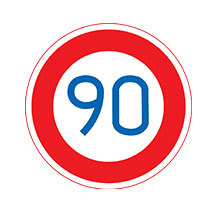
Speed Limit (90 km/h)
Minimum Speed Limit (50 km/h)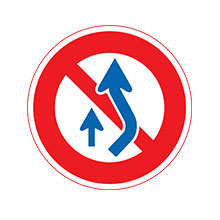
No Overtaking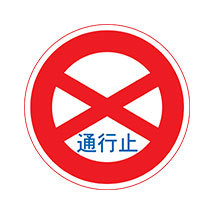
Road Closed to Toll
Road Closed to Vehicles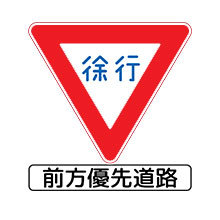
Slow down (In Japanese and English)Japanese warning signs feature a diamond shape and yellow background.
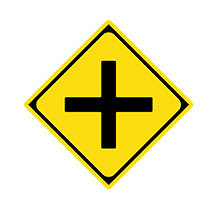
Crossroads
Bumpy Road
Wild Animals Crossing (Deer)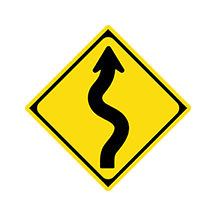
Succession of More Than Two Curves to the Right
Railroad Crossing Ahead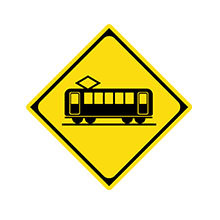
Tram Crossing AheadJapanese information signs feature a green background.
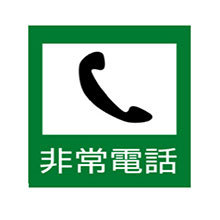
Emergency Telephone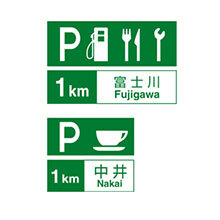
Rest Area/Parking Fuel Stand, Etc.Direction signs in Japan feature a rectangular shape with a blue or green background.
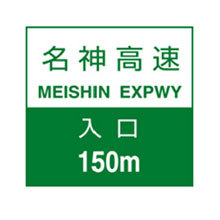
Expressway Entrance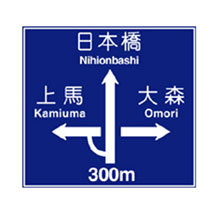
Destination & DirectionTo read more about Japanese road signs, here is a more detailed booklet.
Seatbelt and Child Safety
 Seatbelt Laws
Seatbelt LawsDrivers and all the passengers are required by law to wear a seatbelt. Failure to fasten your seatbelt may result in a fine.
 Booster Seat Laws
Booster Seat LawsChildren under 6 years of age must be seated in child seats.
Parking, Fuel and Toll
 Parking
Parking· Permitted Parking
In Japan, parking cost normally depends on the size of the city and the distance from the city centre. Parking in small towns and cities is usually free.
Paid parking can be expensive in big cities, costing several hundreds of yen per hour. Parking lots in national parks or near tourist attractions sometimes charge a flat fee (typically 200 to 500 yen per use). Urban hotels usually provide parking for their guests at a flat rate (typically 1000 yen per night), while hotels outside the large cities usually offer free parking.
· Forbidden Parking
Please do not park your car indicated with the “No Parking” signs.
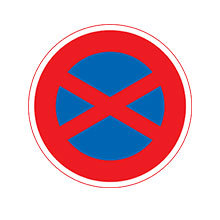
Also do not park the rental vehicle in a place only allowed to use by renting on a monthly basis, marked by the “Kanji” of “月極 ” or “月極駐車場”.
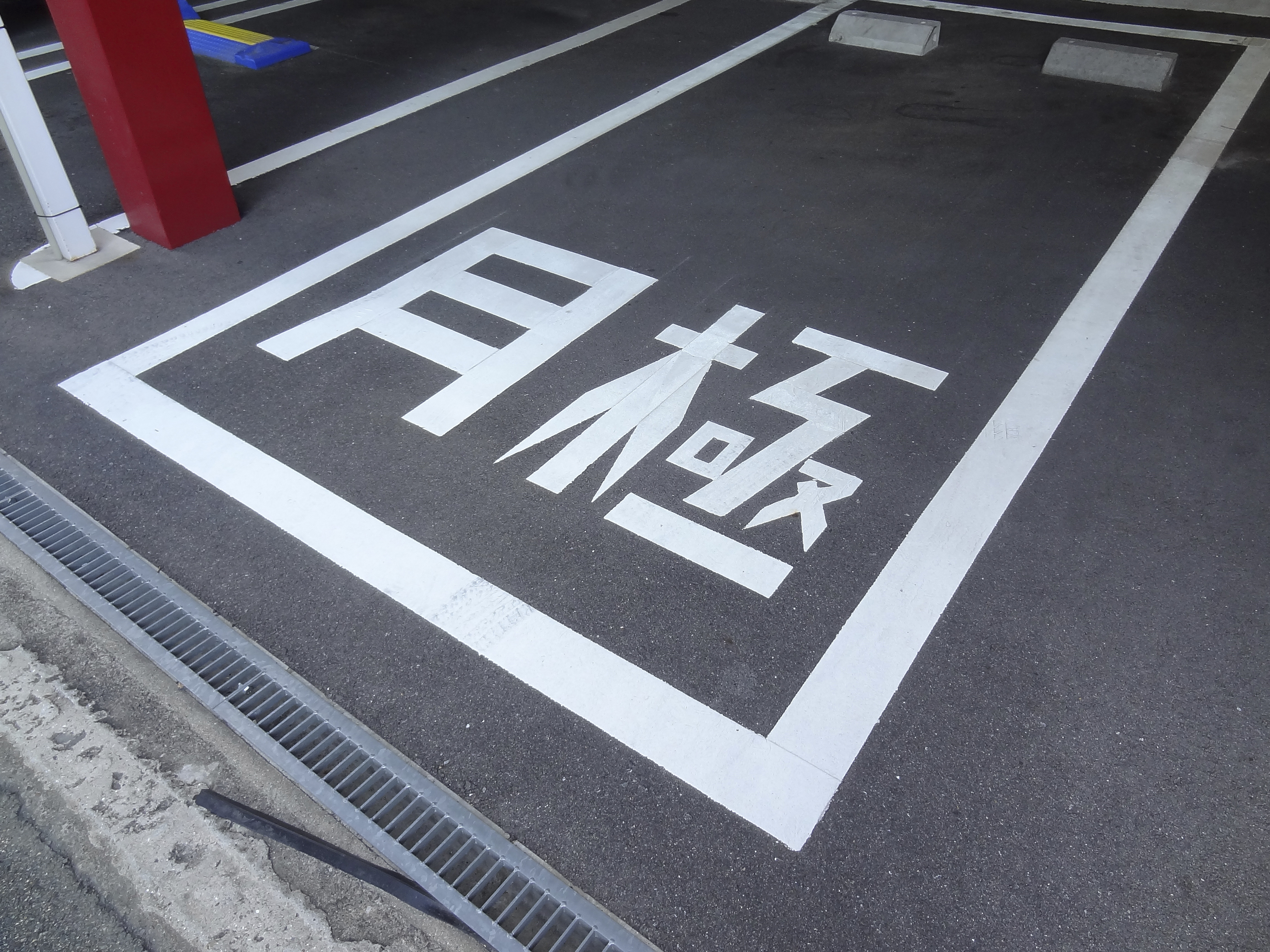
In addition, it is against the law to park a vehicle in the following places in Japan:
- In a tunnel
- On, or within five metres of the edge of an intersection
- Within three metres of the automobile entrance of a garage, car-park or similar
- On pedestrian or cycle crossings and railway lines
- Within ten metres of a bus stop or a bus stop sign
- Within five metres of the edge of an area of road works
- Within five metres of a fire hydrant, water tank or other fire safety equipment
Forbidden parking in Japan will lead to a hefty fine.
 Fuel Prices
Fuel PricesThe average gasoline price in Japan in January 2018 was 141.50 Japanese Yen per litre, while the diesel price was 118.40 over the same period of time.
 Toll
TollMost of the expressways in Japan are toll roads and you must pass through the automatic ETC (Electric Toll Collection) gate or manual gate with ticketing machine. It is highly common to rent an ETC system with the car hire company when taking a self-driving tour in Japan, and it allows you to drive through the ETC gate without stopping. ETC gate feature white “ETC 專用” characters on a purple background.5
 (Image from takingflights.com)
(Image from takingflights.com)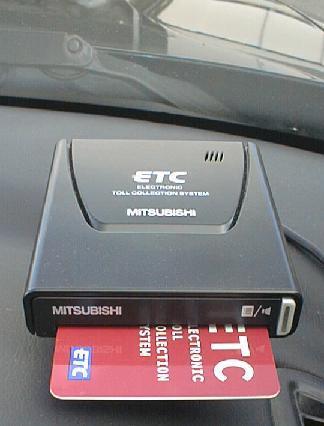 (Image from demflyers.com)
(Image from demflyers.com)Alternative to ETC tolling, you may proceed to the manual gate, which is recognized by the“一般” characters written with a green background. Cash or bank cards can be used to pay the toll fee before entering the road.
Traffic Violation
 DUI Laws
DUI LawsThe alcohol limit in Japan is BAC 0.03%. Drink driving above the limit can result in a maximum prison sentence of 3 years or a fine of about $480,000 Japanese Yen.
 Traffic Fines
Traffic FinesSpeed cameras and speed traps are used to monitor driving speed in Japan. Drivers who exceed the speed limits up to 40km/h over can be fined from 9000 Japanese Yen to 35,000 Japanese Yen, and a 50km/h excess or more over will be viewed as criminal infringement and can result in a prison sentence up to 6 months, or up to 100,000 Japanese Yen fine.
Parking in the prohibitive areas will usually cause a fine from 10,000 to 20,000 Japanese Yen.
Driving Licence and Age Requirements
Japanese law requires that all drivers who do not hold a Japanese driver’s license must hold a country of origin driver's license and an International Driving Permit issued under the 1949 Convention on International Road Traffic. Driver’s licence must be held for at least 1 or 2 years (according to different car hire company).
The minimum driver age for renting a car at a Japanese rental office is 18 years old. This age may vary according to the state and car category rented.
Lesen Sie mehr Details
Die besten Mietwagenangebote in Japan
Häufig gestellte Fragen
- Q1.Was ist ein Versicherungsüberschuss?Der Selbstbehalt ist der Betrag, für den Sie nur haften müssen, wenn ein Schaden (unter Vollkaskoversicherung) oder ein Diebstahl (unter Diebstahlschutz) des Fahrzeugs besteht.
Informationen über die Selbstbeteiligung werden bei der Buchung eines Fahrzeugs bei QEEQ im Preis enthalten. - Q2. Wie kann ich einen zusätzlichen Treiber hinzufügen?Es wird empfohlen, bei Ihrer Ankunft eine Anfrage am Mietschalter zu stellen. Eine zusätzliche Gebühr pro Tag wird erhoben, sofern nicht in der Miete „1 zusätzlicher Fahrer inbegriffen“ angegeben ist.
Bitte beachten Sie, dass für den zusätzlichen Fahrer dieselbe Lizenz und dasselbe Alter gilt. Der zusätzliche Fahrer soll das erforderliche Lizenzdokument zusammen mit dem Hauptfahrer bei der Abholung vorlegen. - Q3.Was ist, wenn ich mein Mietauto außerhalb der Bürozeiten abholen oder abgeben möchte?QEEQ zeigt Ihnen die verfügbaren Fahrzeugangebote zu den von Ihnen ausgewählten Zeitpunkten in den Suchergebnissen.
Für die Abholung oder Rücknahme zu den üblichen Öffnungszeiten kann jedoch eine zusätzliche Gebühr erhoben werden, es sei denn, eine Selbstbedienung oder ein Abholservice ist verfügbar.
Nachdem Sie ein Auto bei QEEQ reserviert haben, informieren wir Sie per E-Mail über die jeweiligen Richtlinien des Autovermieters. - Q4. Kann ich den Mietwagen in ein anderes Land oder eine andere Grenze fahren lassen?Wenn Sie Ihr Auto in einem Land abholen und in einem anderen Land ablegen möchten, werden Ihnen in den Suchergebnissen die Autos angezeigt, mit denen Sie dies tun können.
Wenn Sie planen, während Ihrer Reise Grenzen zu überschreiten, beachten Sie Folgendes:
1. Möglicherweise müssen Sie mehr zahlen.
Es gibt oft zusätzliche Gebühren, Steuern oder zusätzliche Deckung, die Sie am Mietwagenschalter bezahlen.
2. Es darf nicht erlaubt sein.
Je nachdem, wo Sie mieten, können Sie Ihr Auto möglicherweise nicht in ein anderes Land bringen.
Bitte senden Sie uns eine E-Mail, wenn Sie Ihr Mietfahrzeug während Ihrer Reise in ein anderes Land bringen möchten, und wir besprechen Sie mit Ihren Möglichkeiten. - Q5. Kann ich mein Auto an einem Ort abholen und an einem anderen Ort abgeben?Ja. Sie können das Fahrzeug an einem Ort abholen und an einem anderen abstellen. Eine Einweggebühr wird anfallen. Ob dies im Mietpreis enthalten ist oder welche zusätzlichen Kosten anfallen können, wird zum Zeitpunkt der Buchung auf QEEQ eindeutig angegeben.
Bitte informieren Sie die Mietwagenfirma über den Ort Ihrer Abgabe, wenn Sie das Fahrzeug abholen, oder setzen Sie sich während Ihrer Reise direkt mit ihnen in Verbindung. Eine Telefonnummer finden Sie auf dem Mietvertrag, den Sie bei der Abholung unterschrieben haben.
Irgendeine Frage? Besuchen Sie einfach unsere Hilfeseite .
Entdecken Sie weitere Reiseziele in Japan
Our Advantages
Abonnieren Sie exklusive Angebote und Deals
Bitte geben Sie eine gültige E-Mail-Adresse ein

























 (Image from takingflights.com
(Image from takingflights.com (Image from demflyers.com)
(Image from demflyers.com)

